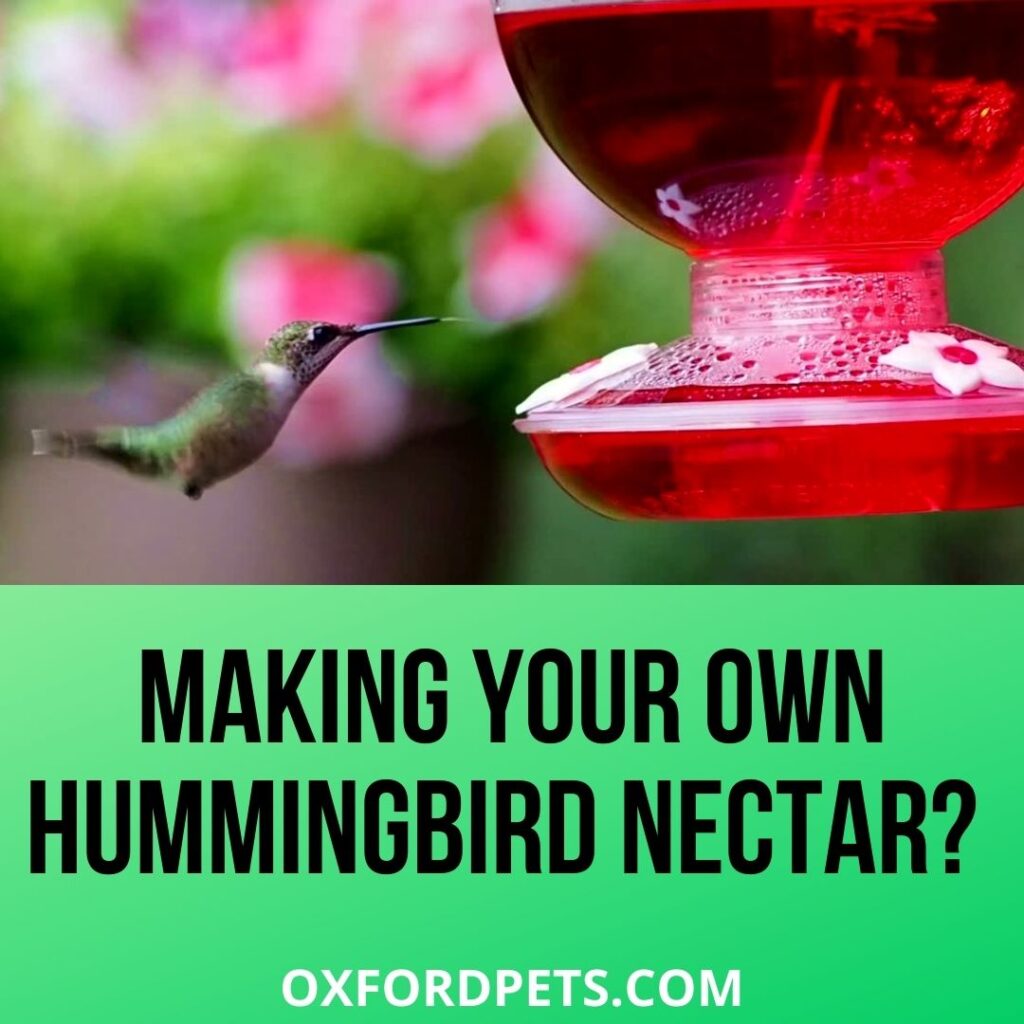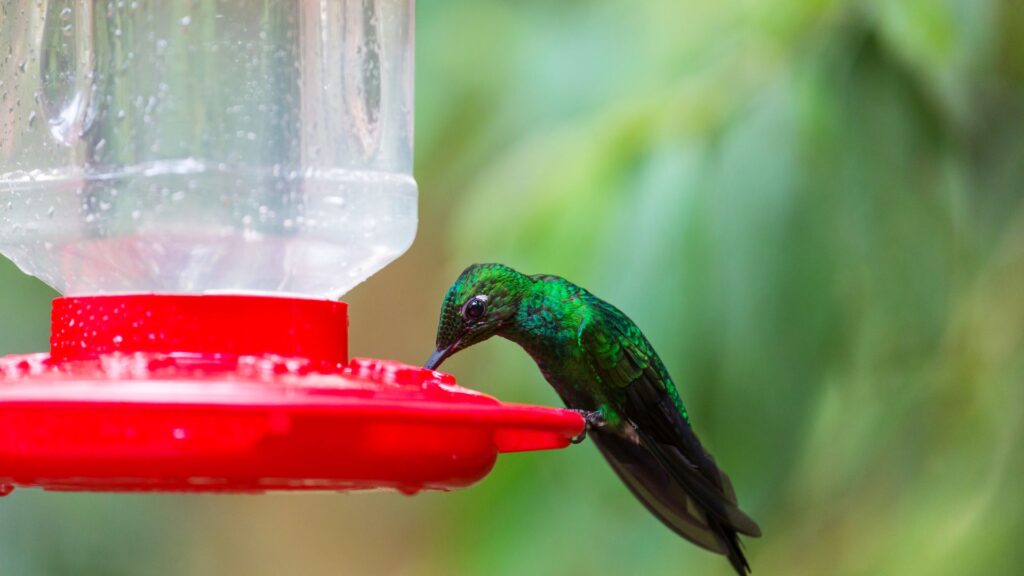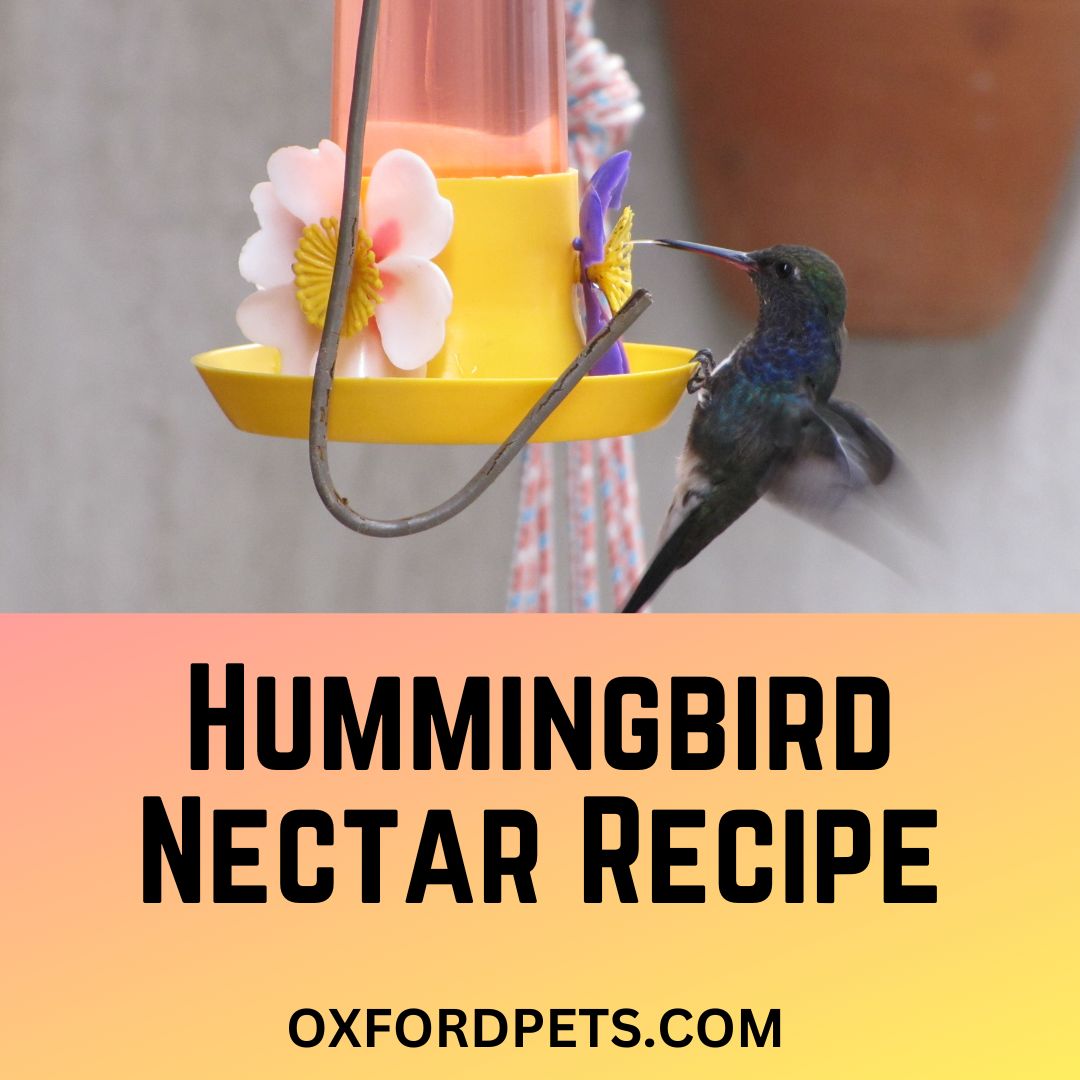Can I Make My Own Hummingbird Nectar? Wondering What it is like to prepare Hummingbird Nectar at home? Well, nothing but an easy, hassle-free, and interesting task. In a few easy steps, you can bring these nectar-loving birds to the feeder in your garden.
Hummingbirds are magical creatures who require a steady source of Nectar to survive. Natural Nectar hops from flower to flower and fulfills their daily needs. However, in the absence of natural features and flowers, humans can provide artificial Nectar to hummingbirds right in their garden. Wondering How?
It is humane to prepare and offer artificial Nectar to hummingbirds on a hot and humid day. Hummingbirds consume Nectar as their primary food source, and you can prepare it right in your kitchen. Follow these steps to prepare Hummingbird Nectar and tempt those little birds in your backyard/ garden.
Contents
- Step-by-Step Procedure for Preparing Hummingbird Nectar at Home
- Direction for making Hummingbird Nectar at Home:
- Do I Need To Boil Sugar Water For Hummingbirds?
- Hummingbird Food Recipe Without Boiling
- Hummingbird Nectar Recipe For Winter
- Hummingbird Nectar Recipe Audubon
- How Long Does Hummingbird Nectar Last?
- Do Hummingbirds Prefer Homemade Nectar?
- Hummingbird Nectar Recipe Without Sugar
- What Can I Feed Hummingbirds Besides Sugar Water?
- Wrapping up…
Step-by-Step Procedure for Preparing Hummingbird Nectar at Home
- White Cane Sugar
- Water (Which is safe for human consumption)
- A Vessel and spoon for mixing
- Electric Kettle or Induction for Boiling water

Direction for making Hummingbird Nectar at Home:
- Keep Water for boiling (until one boil).
- Now add White Cane Sugar into boiled/ warm water, stir it and allow it to mix nicely.
NOTE: Keep the Sugar Water composition as 1:3. Stick to the right proportion since increasing Sugar content can harm the poor hummer, and increasing water content will aid in providing zero benefits.
- Now allow the Sugar Water mixture (Nectar) to cool down before you transfer it into the Hummingbird feeder.
TIP: Ensure changing Nectar every single day and clean your hummingbird feeder between refills.
Do I Need To Boil Sugar Water For Hummingbirds?
Until and Unless you are using clean drinking water, it isn’t necessary to boil Sugar Water for Hummingbirds. Using boiled or warm Water only helps in dissolving Sugar faster and easier.
Mixing Sugar into cold Water is slightly tricky and requires continuous stirring for a few minutes. Whereas when your boil Sugar water, the content mixes seamlessly within no time.
Besides that, Boiling Sugar water for Hummingbirds sterilizes the Water and minimizes contamination. This also helps in slowing down the process of fermentation. In addition, Boiling Water removes impurities making the liquid safer for the birds to drink.
Hummingbird Food Recipe Without Boiling
If you want to prepare Hummingbird food/ nectar without boiling, you can easily do so.
Take 1 part of White cane sugar and 3 parts of Pure Drinking Water, pour them into a container, and give a nice stir. While you are using Clean drinking water, you can prepare the Nectar without boiling.
Hummingbird Nectar Recipe For Winter
The 1:3 Sugar Water Nectar for Hummingbirds is an ideal recipe for winters. In slightly colder weather, the temperature starts dropping; the 1:3 Sugar Water ratio will keep the solvent from freezing or crystallizing when the temperature starts dropping.
However, if the weather is even harsher, do not increase the sugar content and far. Instead, try covering the Hummingbird feeder with a warmer, work light, or outdoor floodlight. Doing so will ensure keeping the Nectar in a liquid state. You can also hang the feeder on a covered porch or under a deep eave.
Hummingbird Nectar Recipe Audubon
Hummingbirds are tiny birds who, despite their size, are one of the most active living flying creatures. For all the hours they are awake, Hummers would stay active and alert and would indulge in some or the other physical job. Hummingbirds need a regular dose of Nectar/ Sugar Water to maintain their energy and momentum.
According to the National Audubon Society, here is how you can prepare Hummingbird Nectar at home:
Take a bowl and mix 1 part of Sugar and four parts of Water. (NOTE: The Museum of Louisiana State University, however, suggests a 1:3 Sugar Water ratio. Read the research paper for more details)
Dissolve the Sugar well, or give it a quick boil for speed and ease down the process.
Once the Nectar has cooled, transfer it into the feeder, and it is ready to drink.

How Long Does Hummingbird Nectar Last?
How Long Does Homemade Hummingbird Nectar Last? Hummingbird Nectar which is found in flowers can last fresh forever. Until and unless the flower wither, the Nectar will remain fresh and safe for birds.
However, Homemade Hummingbird Nectar would last only for a maximum of up to one week inside the refrigerator. After that, the Nectar will gradually spoil as the sugar solution naturally breaks down when kept for long.
- Signs of Nectar Spoilage
Clean and Fresh Nectar appears as clear as Water. However, Spoiled Nectar may start showing cloudy or milky discoloration with black or white floating specks. In case you start observing mold or fungus inside the reservoir, throw the mixture away and prepare a new batch. Sticky or crystallized residue too is an indication of spoilage, and such a solution isn’t safe for feeding Hummingbirds.
- The Dangers of Spoiled Nectar
Anything rotten or spoiled isn’t safe for consumption. When Nectar (Sugar and Water mixture) spoils, the sugar crystals become less nutritious and more difficult to digest. As Nectar goes bad, Sugar starts crystalizing, making the solution thicker. It can also aid the formation of fungus, mold, and bacteria. All of these may result into,
- Attracting pests including Bees, Ants, Racoons, Insects, and even Bears.
- When Hummingbirds suck the spoiled Nectar, they may experience digestive problems.
- The Crystalized spoiled Nectar can coat the bills and feathers of birds. Due to thickening, it can become difficult to drink as well.
Do Hummingbirds Prefer Homemade Nectar?
Nectar isn’t a preference but a necessity for Hummingbirds. However, because homemade Nectar is safe and healthier, Hummingbirds would come again and again to have it. There are many great reasons to make your Nectar since the one available commercially isn’t the healthiest.
Commercial Nectars are full of preservatives, dye, odd ingredients, and whatnot. While you bring a packed, ready-to-mix Nectar for Hummingbirds, you aren’t well-versed about what went inside preparing the solvent. However, Nectar requires nothing more than White Cane Sugar and Clean water when you make one at home from scratch.
NOTE: Not all commercial Hummingbird Nectars are bad. Several brands make Vitamin rich and safe ready-to-use Nectars. It is just a matter of the right choice.
Hummingbird Nectar Recipe Without Sugar
Hummingbird Nectar is just Sugar water, and therefore it can’t be prepared without using Sugar. Never prepare Hummingbird Nectar using Sugar substitutes. White Cane Sugar is the primary ingredient of Nectar that provide the bird with the right amount of calory and energy. Maintaining the 1:3 (Sugar Water) ratio is the correct way of preparing Nectar.
There are several sugar substitutes for human consumption, including Honey, Jaggery, Brown Sugar, and Artificial sweeteners. However, none of these is fit for preparing Nectar; thus, stick to the White Cane Sugar and Water Recipe.
What Can I Feed Hummingbirds Besides Sugar Water?
If you are a passionate Hummingbird lover and welcome these tiny birds in your garden every year, you can offer them much more than just the Nectar. Hummingbirds in the wild feed on larvae, insect eggs, small insects, and spiders.
Besides that, red tubular flowers are quite popular amongst hummers. All of these food items provide them with the required fat, protein, and salts that Nectar alone can’t make up for.
Though hummingbirds would find and fulfill their dietary needs on their own, you can provide the above feeds and make it slightly easier for them. Especially during snowy winters, when finding these food items becomes slightly tricky, it is better to offer help to the little birds.
- How Do Hummingbirds Find Feeders?
- How and Where Do Hummingbirds Sleep?
- Correct Composition of Hummingbird Sugar Water Recipe?
Wrapping up…
Follow the classic hummingbird nectar recipe and make these tiny birds visit your garden again and again. Hummingbirds know their food, and if you provide them with the right kind of Nectar, they will love coming back and again to your place.
However, take care to let the Nectar cool down before you pour it into the feeder. Also, ensure changing the Nectar daily and cleaning the feeder in between.
